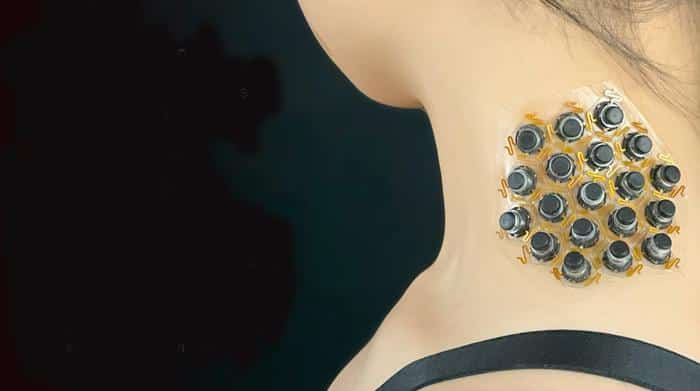Northwestern University engineers have innovated a groundbreaking haptic patch capable of conveying complex touch sensations through the skin. This transformative wearable technology holds enormous potential for both virtual reality and health care applications, particularly for vision-impaired individuals.
A team of engineers from Northwestern University has developed a pioneering wearable device that simulates a variety of complex sensations on the skin, offering the potential to revolutionize virtual reality (VR), gaming and health care. This thin, flexible haptic patch adheres to the skin to provide realistic and immersive sensory experiences.
While the device is a natural fit for enhancing gaming and VR experiences, the researchers envision far-reaching health care applications, such as aiding those with visual impairments to “feel” their surroundings or delivering feedback to individuals with prosthetic limbs.
The study, published in the journal Nature, showcases the latest in wearable technology from John A. Rogers, Louis Simpson and Kimberly Querrey Professor of Materials Science and Engineering, Biomedical Engineering and Neurological Surgery at Northwestern.
“Specifically, these tiny devices can deliver controlled forces across a range of frequencies, providing constant force without continuous application of power,” Rogers said in a news release, elaborating on the device’s capabilities. “An additional version allows the same actuators to provide a gentle twisting motion at the surface of the skin to complement the ability to deliver vertical force, adding realism to the sensations.”
Innovative Engineering and Energy Efficiency
The wearable haptic patch consists of 19 small magnetic actuators arranged in a hexagonal array, enclosed within a flexible silicone mesh.

Caption: A user wears the new device on her neck for sensory feedback.
Credit: Northwestern University
These actuators produce varied sensations including pressure, vibration and twisting. They receive data about a person’s surroundings via Bluetooth technology from a smartphone, which then translates the information into tactile feedback.
The device’s energy-efficient “bistable” design ensures minimal power consumption. The actuators store mechanical energy in the skin and the device’s internal structure, only using energy to change positions. This allows for prolonged operation on a single battery charge.
“Instead of fighting against the skin, the idea was ultimately to actually use the energy that’s stored in skin mechanically as elastic energy and recover that during the operation of the device,” first author Matthew Flavin, who was a postdoctoral researcher in Rogers’ lab at the time of the research and is now an assistant professor at Georgia Institute of Technology, said in the news release.
Testing Sensory Substitution
The device underwent rigorous testing where blindfolded participants navigated through obstacles, altered foot placement and improved balance based on haptic feedback.
One test involved subjects navigating a path lined with obstacles; as they approached an object, the device provided increasingly intense feedback, helping them adjust their movements in real time.
By substituting visual with mechanical information, the device “would operate very similarly to how a white cane would, but it’s integrating more information than someone would be able to get with a more common aid,” Flavin added.
Broader Implications and Future Directions
The device offers a form of “vision” through haptic patterns, which could be especially useful for individuals with vision impairments. Using data from smartphone LiDAR, the haptic patch can create a tactile representation of a person’s surroundings.
“This sort of ‘sensory substitution’ provides a primitive, but functionally meaningful, sense of one’s surroundings without reliance on eyesight — a capability useful for individuals with vision impairments,” Rogers aded.
This breakthrough encapsulates a significant leap in wearable technology, demonstrating the potential to change lives by enhancing sensory experiences and improving the quality of life for individuals with sensory impairments.

